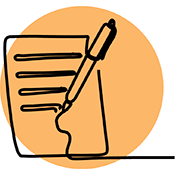
This site provides general legal information. This is not legal advice. The law that applies to people arriving at the Canada-United States border is complex. Every situation is different. We encourage you to seek legal advice. You can start by booking a free consultation with our staff lawyer to get legal advice about your situation.
Common Questions
Can I make a refugee claim at the Canadian land border?
IMPORTANT: In Canada, asking for protection from persecution is called making a “refugee claim.” In the United States (U.S.), this process is called “seeking asylum.”
To make a refugee claim at the Canadian land border, Canada must decide if your claim is “eligible” to be referred to the Immigration and Refugee Board (IRB) for a decision.
You must meet several requirements to be able to make a refugee claim in Canada. One of these requirements is that your claim is eligible under the Safe Third Country Agreement (STCA), which is an agreement between the governments of Canada and the U.S.
Contact us for legal advice about your eligibility to make a refugee claim at the border.
Who can make a refugee claim in Canada?
Anyone can make a refugee claim in Canada, but not all claims will be found eligible.
If your claim is found to be ineligible, your refugee claim will not be sent to the Immigration and Refugee Board (IRB) to be decided.
If you already have a Removal Order, you will not be able to make a refugee claim.
Your refugee claim will be found ineligible if you:
- made a previous refugee claim in Canada that was rejected, or found to be abandoned
- made a previous refugee claim in Canada that was withdrawn after it was referred to the Immigration and Refugee Board (IRB)
- made a refugee/asylum claim in the United States (U.S.), United Kingdom, New Zealand or Australia, and the Canadian government has information to confirm that you made a claim through information-sharing with that country
- have been recognized as a Convention Refugee in another country where you can be returned
- have been convicted of a serious crime, including a criminal conviction that would have a maximum prison term of at least 10 years in Canada
- have been given protection in Canada, either a positive decision from the Refugee Board or a successful Pre-Removal Risk Assessment (PRRA)
Remember, your refugee claim must also be eligible under the Safe Third Country Agreement.
Contact us for legal advice about who can make a refugee claim at the border.
Who can make a refugee claim in Canada under the Safe Third Country Agreement?
The Safe Third Country Agreement (STCA) says that you must make your refugee claim in the first of the two countries that you arrive in — Canada or the U.S. This means that if you are in the U.S. now you cannot enter Canada to make a refugee claim.
However, there are exceptions to this rule. Canada will assess if you meet an exception when you are at the border. If you can’t prove you meet an exception, you will be turned back to the U.S.
The most common exceptions to the STCA are:
- Family Member
- Unaccompanied Minor
- Canadian Document Holder
1. Family Member: You have a close family member living in Canada who has immigration status that qualifies them to be an “anchor relative” for you.
A close family member can only be a:
- spouse (including same-sex spouse)
- common-law partner
- legal guardian
- child
- parent
- sibling
- grandparent
- grandchild
- uncle or aunt
- nephew or niece
Their immigration status must be:
- Canadian citizen
- Permanent resident
- An adult (18+) who made a refugee claim that has been referred to the Immigration and Refugee Board (IRB) that has not been rejected, withdrawn, abandoned or terminated. A child refugee claimant (under 18) cannot be an anchor relative
- Protected person (accepted as a refugee by the IRB or proof of a successful Pre-Removal Risk Assessment (PRRA) application)
- Has a valid work or study permit, but the person is not a refused or ineligible refugee claimant
Here are some examples of people who would not qualify as an anchor relative:
- Someone who applied for a PRRA that has not been decided yet
- A refugee claimant under 18 years old
- A cousin
- A great-aunt or great-uncle
2. Unaccompanied Minor: You may qualify for the unaccompanied minor exception if you:
- Are under 18
- Do not have a parent or legal guardian in Canada or the U.S.
Even if your parents are only temporarily in the U.S. or Canada, you will not qualify for the exception. It your parents’ presence in either country, and not their immigration status, that matters.
3. Valid Canadian Document Holder: You may qualify for the document holder exception if you have:
- A Canadian temporary resident or permanent resident visa
- A temporary resident permit (TRP)
- A travel document issued by Canada (for permanent residents or refugees)
If you are a national of a country whose citizens do not need a visa to enter Canada but do need one to enter the United States, you will also meet an exception to the STCA.
Learn whether you need a visa to travel to Canada.
Learn whether you need a via to travel to the United States.
Contact us for legal advice about the exceptions to the Safe Third Country Agreement.
Does the Safe Third Country Agreement Apply to US Citizens?
No, the Safe Third Country Agreement (STCA) does not apply to US citizens.
If you are a US citizen and you are considering seeking protection in Canada, it is advised that you first watch the Considering Canada webinar to learn about all of your immigration options.
I have an Electronic Travel Authorization (eTA) to enter Canada. Is this the same thing as a valid visa in the Valid Visa Holder Exception?
An Electronic Travel Authorization (eTA) is not a visa. Here are some helpful definitions:
- A visa is a transit document that allows you to enter, stay, or work in a country. It is often attached to your passport and usually requires an in-depth application process. Visas can be for temporary purposes (like tourism or study) or for permanent resident status.
- An eTA is not a visa but is required for visa-exempt nationals travelling to or transiting through Canada by air. It is linked to your passport electronically and usually involves a simple application process.
- An Electronic System for Travel Authorization (ESTA)is a similar electronic travel authorization for visa-exempt travellers entering the United States under the Visa Waiver Program (VWP). Like an eTA, it is not a visa.
Someone with an eTA or an ESTA does not meet the Valid Canadian Visa Holder Exception.
The Safe Third Country Agreement only applies at the land border. It does not apply at airports or seaports.
Contact us for legal advice about whether or not you qualify under the valid visa exception to the Safe Third Country Agreement.
Are there any other exceptions to the Safe Third Country Agreement?
There are a few more exceptions:
- U.S. Citizen: If you are a U.S. citizen, the Safe Third Country Agreement does not apply to you.
- Stateless Person: If you are a stateless person and a “habitual residents” of the U.S., the STCA does not apply to you. Canada defines a “stateless person” as a person who is not considered a citizen by any state under the operation of its law. “Habitual residence” is a legal concept that requires review and legal advice.
- Risk of Death Penalty: If you have been charged or convicted of an offence punishable by the death penalty, the STCA does not apply to you. If you fear risk to your life, but have not been charged or convicted of an offence punishable by the death penalty, you would not be eligible for this exception
There are additional rare exceptions that can apply if you:
- Are turned back to Canada after attempting to enter the U.S. without having a refugee claim decided in the U.S.; or
- Are a permanent resident of Canada who has been ordered deported from the U.S. and are being returned to Canada
Contact us for legal advice about your eligibility to make a refugee claim at the border under an exception.
How do I prove that I meet an exception to the Safe Third Country Agreement (STCA)?
Before you go to the Canadian land border, make sure that you qualify for an exception and that you have the documents to prove it. Check our documents page for more details on what you need, and contact us for legal advice about your situation.
Don’t make your own assessment about your eligibility and documents. Contact our clinic, and we can review them with you and provide you with legal advice specific to your situation. All our services are free. The Canada Border Services Agency (CBSA) makes the final decision about eligibility.
Contact us for legal advice about your eligibility to make a refugee claim at the border under the Safe Third Country Agreement.
Can I make a refugee claim at Roxham Road if I don’t meet an exception to the Safe Third Country Agreement (STCA)?
The Safe Third Country Agreement (STCA) applies everywhere along the Canada-U.S. land border, including between official ports of entry, called POEs.
You may have heard about places like Roxham Road in Quebec, where people could enter Canada in the past, even if they did not meet an exception. This has now changed. If you go to Roxham Road and you do not meet an exception, you will be turned back to the U.S.
I have already made a refugee claim in another country. Can I make a refugee claim at the Canadian border?
If you made a refugee claim or applied for asylum in the United States, the United Kingdom, New Zealand, or Australia, you may not be able to have your refugee claim heard in Canada.
Along with Canada, these countries are called the Five Eyes countries. They share biometric information, such as fingerprint data. If you made a claim in a Five Eyes Country and the Canadian government has information that confirms this through information-sharing with that country, you will not be able to make a refugee claim in Canada.
It can be difficult to know if you have started a refugee/asylum claim in another country.
Contact us to discuss your situation.
Is there another option for me?
If you have made a refugee claim in a Five Eyes Country, AND you meet an exception to the Safe Third Country Agreement, you may be able to make a different kind of application in Canada called a Pre-Removal Risk Assessment (PRRA). The PRRA is also an application for protection. It has a different process than a refugee claim. Learn more about the PRRA.
If this situation applies to you, the Canada Border Services Agency (CBSA) officer should tell you if you can apply for a PRRA and give you instructions about how to apply. CBSA should also give you an identity document that looks like the one that refugee claimants receive. Check our documents page to see what these documents look like.
Are there countries that Canada does not remove people to?
Yes, there are many countries that Canada does not remove people to.
If you are from a country that Canada is not removing people to, you will not be invited to start your PRRA. This is because you can’t be removed at this time. You are not “pre-removal.” See the list of these countries on the CBSA website. You need legal advice about your situation.
Contact us for legal advice about your options to seek protection in Canada if you made a refugee claim in a Five Eyes Country.
